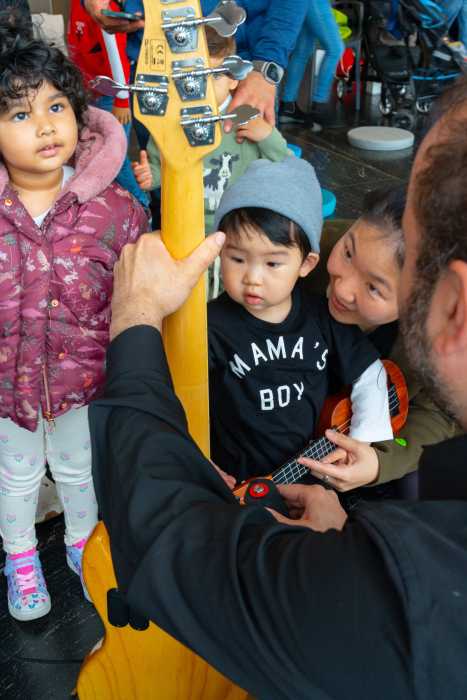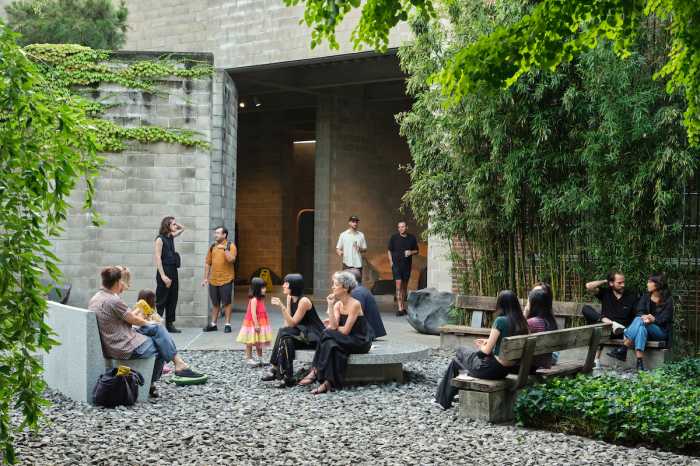
The emergency MTA board hearing, held on Jan. 15, on the new L train plans (screenshot via MTA board webcast)
Jan. 16, 2019 By Laura Hanrahan
The emergency Metropolitan Transportation Authority board meeting held yesterday that was meant to serve as a discussion and information session over new L train plans has instead left many members with unanswered questions and concerns about the revised course for the line.
The nearly three-and-a-half-hour meeting going over the new construction plan, devised just weeks ago by Governor Andrew Cuomo’s team of Ivy League engineers, saw board members raise issues on several facets of the project.
Many of the questions posed by the board dealt with the structural safety of the tunnel under the new plan, the longevity of the repairs, and the mitigation plan for possible cancer-causing silica dust that would be brought to the surface during construction.
The line of questioning, especially on the silica dust, was informed after a bombshell New York Times report published just hours before the emergency meeting that said a past approach to tunnel work, similar to the new proposal, had been rejected by the MTA over safety concerns.
The meeting ultimately resulted in all parties agreeing to have an independent consultant review the construction plans and report back to the MTA before the board moves forward with a vote.
Several board members at first pointed to their confusion over Cuomo’s announcement on Jan. 3 that effectively called off the L train shutdown, since the body has not yet voted to approve the new plan.
Andrew Zuckerman, a board member, pressed the alternate L train plan’s managing director on why the agency had removed signage and information from the website about the apparent prior plan, and why the MTA had released a statement saying the shutdown was “averted.”
“Can you explain why we’ve stated ‘averted’ in the past tense, given that…I’m not sure we have decided this path yet?” Zuckerman asked Veronique Hakim, the project’s managing director.

Polly Trottenberg (right), the city’s Department of Transportation commissioner and MTA board member. (Screenshot via MTA webcast)
At one point, Polly Trottenberg, commissioner of the city’s Department of Transportation who also serves on the board, repeatedly asked MTA leadership whether the decision to move forward with the new L train plan had already been made.
“Was the decision made? Do we have any actual role here?” she asked.
Fernando Ferrer, the acting MTA chairman who was appointed by Cuomo, appeared exasperated by the line of questioning, and even turned his microphone off to make inaudible comments to Trottenberg.
He later, however, said the 17-member MTA board will have final approval over the new plan, and that the members will be able to review the full proposal prior to.
If the board votes against the plan, the shutdown could be back on the table, he said.
Representatives of WSP, the consulting firm that designed both the new and original 15-month shutdown plan, reaffirmed their support for the new plan throughout the meeting and recommended that the board approve it.
The firm, however, also responded to several points made the New York Times article.
The article said that the current plan, involving a racking system of electrical cables being hung on the tunnel walls, had been considered back in 2014 but rejected over fears of structural integrity of the tunnel’s concrete lining.
Jerry Jannetti, senior vice president of WSP, stated that the currently proposed racking system is in fact significantly different, and will require 60 percent fewer bolts than if the cables were individually bolted to the tunnel walls—which is what was considered in 2014.
Board members also raised concerns over possible silica dust contamination for commuters if the Canarsie Tunnel were to remain open during construction.
Exposure to silica dust, often found in construction materials like concrete, is linked to increased risk of lung cancer.
In the MTA’s original plans, it cited silica exposure as one of the factors that necessitated a full shutdown, according to the New York Times report.

Governor Andrew Cuomo touring the Canarsie tunnel in December (via Governor Andrew Cuomo)
“Even after you’ve cleaned up, vacuumed, hosed down, done all the mitigation agreements, it can be a little bedeviling to get the dust levels down to where they need to be,” Trottenberg said.
Warren Goodman, health and safety manager for Judlau Contracting, which is part of the team of contractors for the L train project, assured the board that there are methods to capture silica.
“We may use other methods that are available and the workers will be wearing personal protective equipment we would call masks and filters,” he said.
Patrick Foye, MTA president, added that demolition of the concrete benchwall will only occur on weekends to allow for extra time to clean.
Susan Metzger, another board member, called for a detailed silica mitigation plan to be crafted and submitted to the board.
“You don’t know yet how much silica you are going to be dealing with,” Metzger said. “As a consequence, we don’t yet have a specific mitigation plan. I think the board would want to see more information on that before we would feel confident moving on.”
The tunnel’s lifespan after the reconstruction was also called into question when WSP representatives were only able to say that the tunnel will last “decades.”
The previous plan to rebuild the bench walls was expected to uphold for about a century, with reports gauging the number in the new plan to be 40 years.
Jannetti later said the lifespan of the repairs will vary based on how well the tunnel is maintained.
The board could take a vote on the alternate plan as soon as next week.
One Comment







All you have to do is shut it once for 1.5 years and it will be fixed for 100 years. But no, current politicians won’t live that long and it won’t benefit their votes so they go and do a photo shoot advertising inferior plan that will fix it for only 40 years and poison riders with silica dust. Albany corruption in its essence.